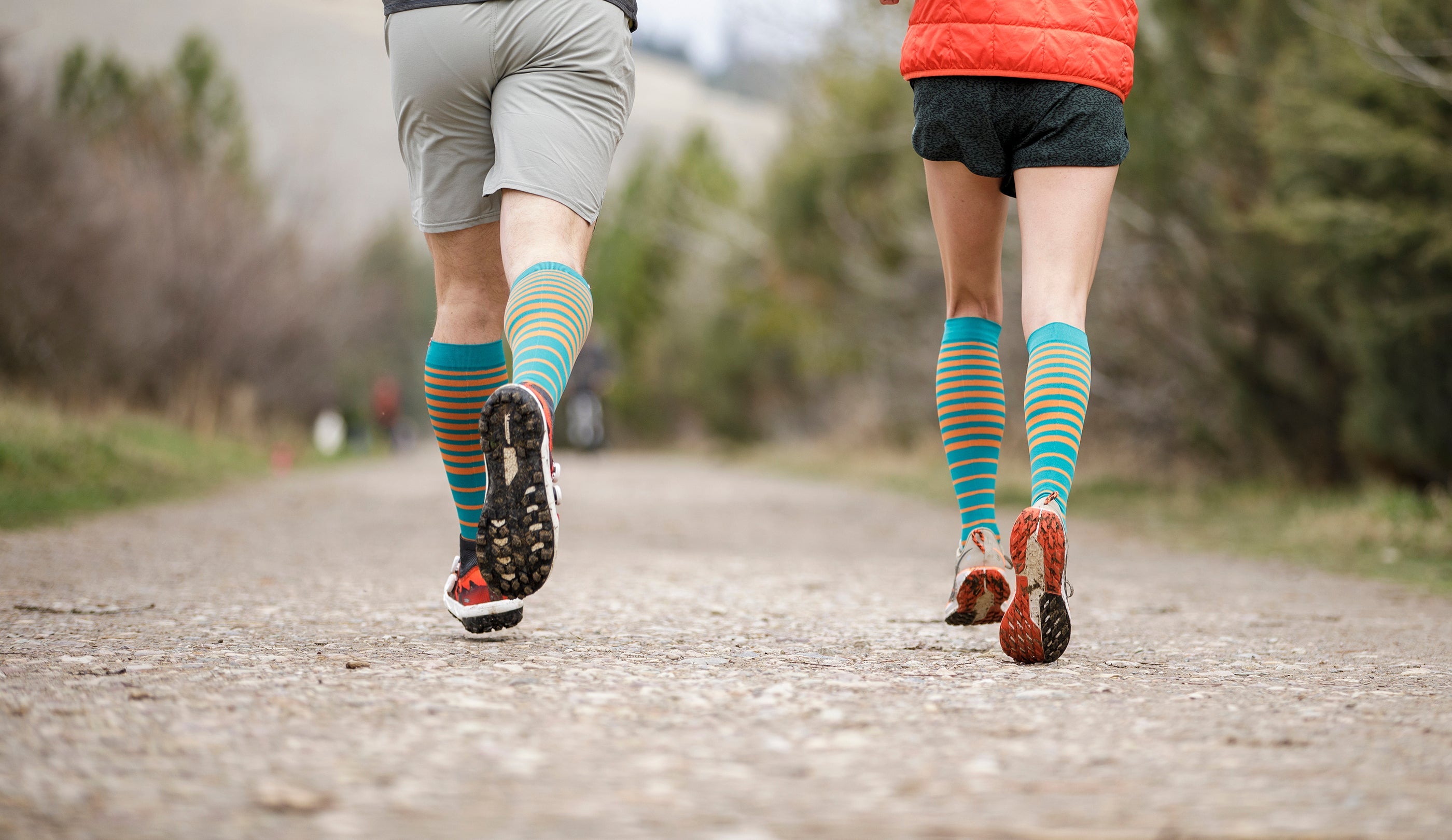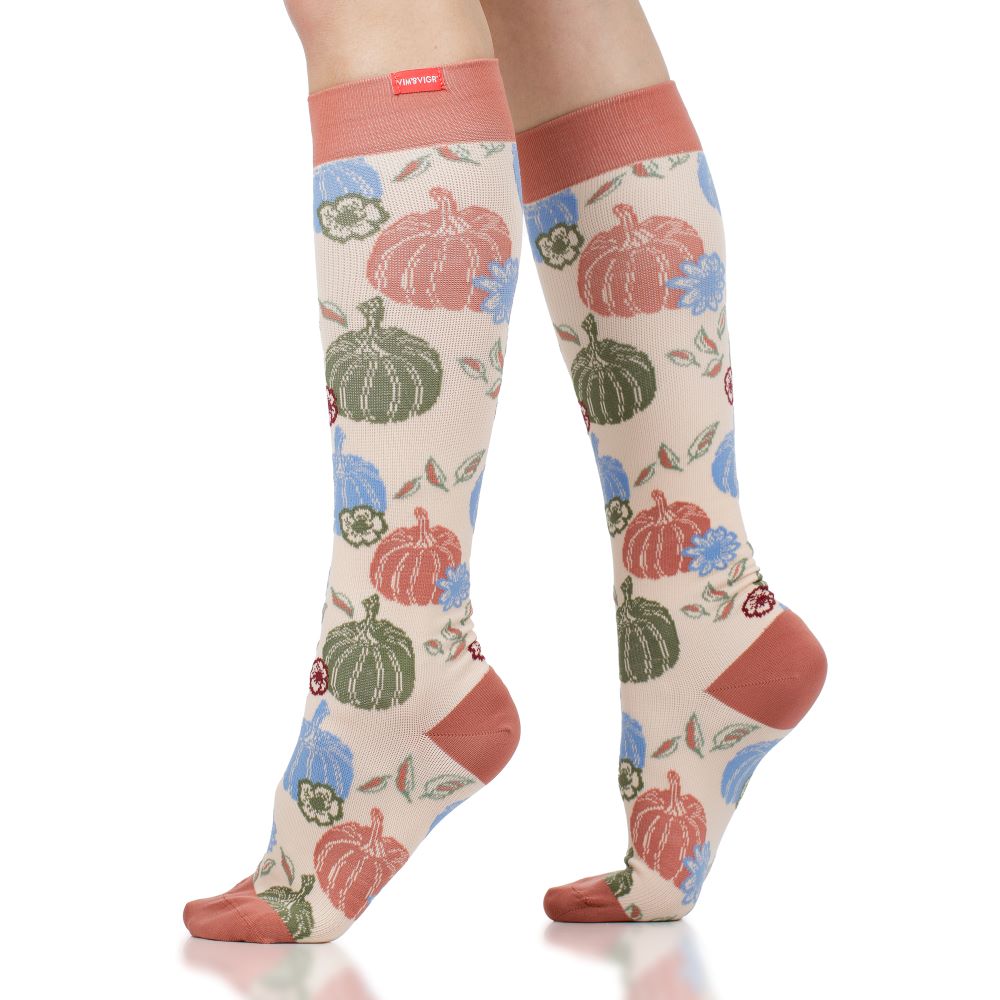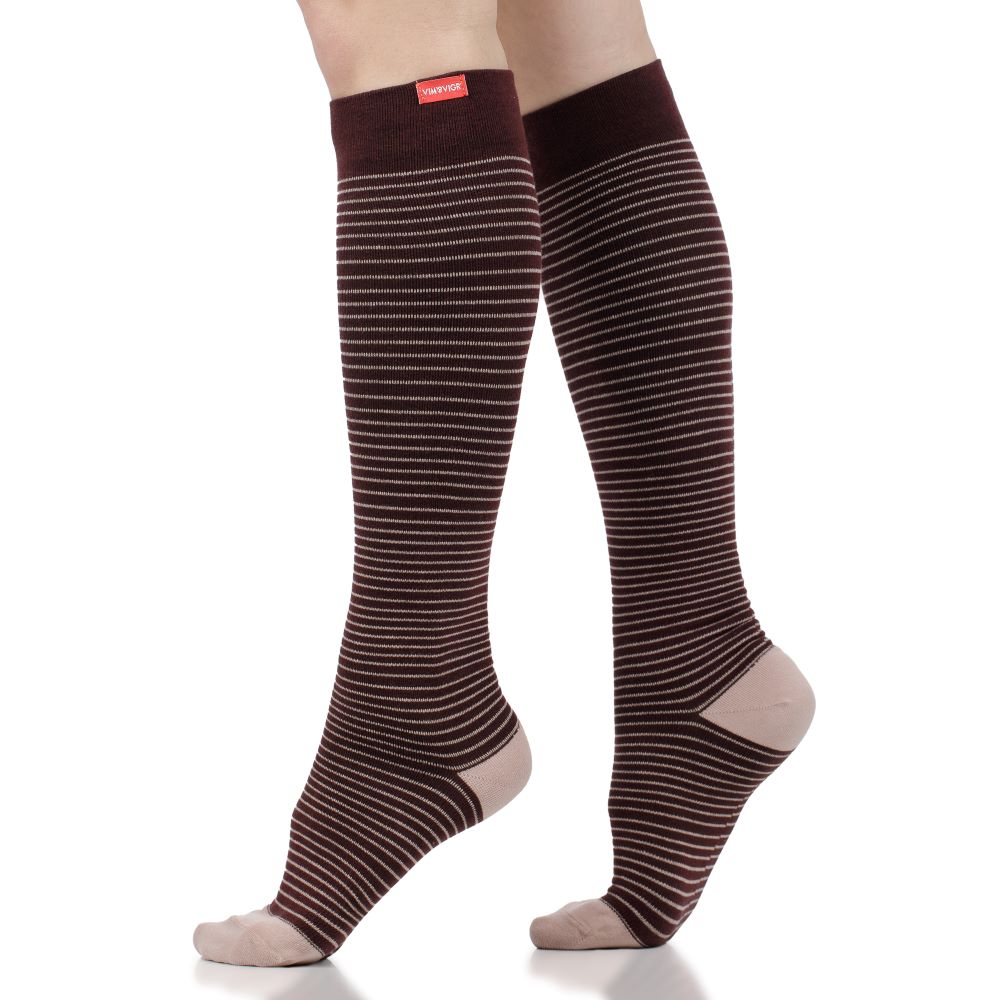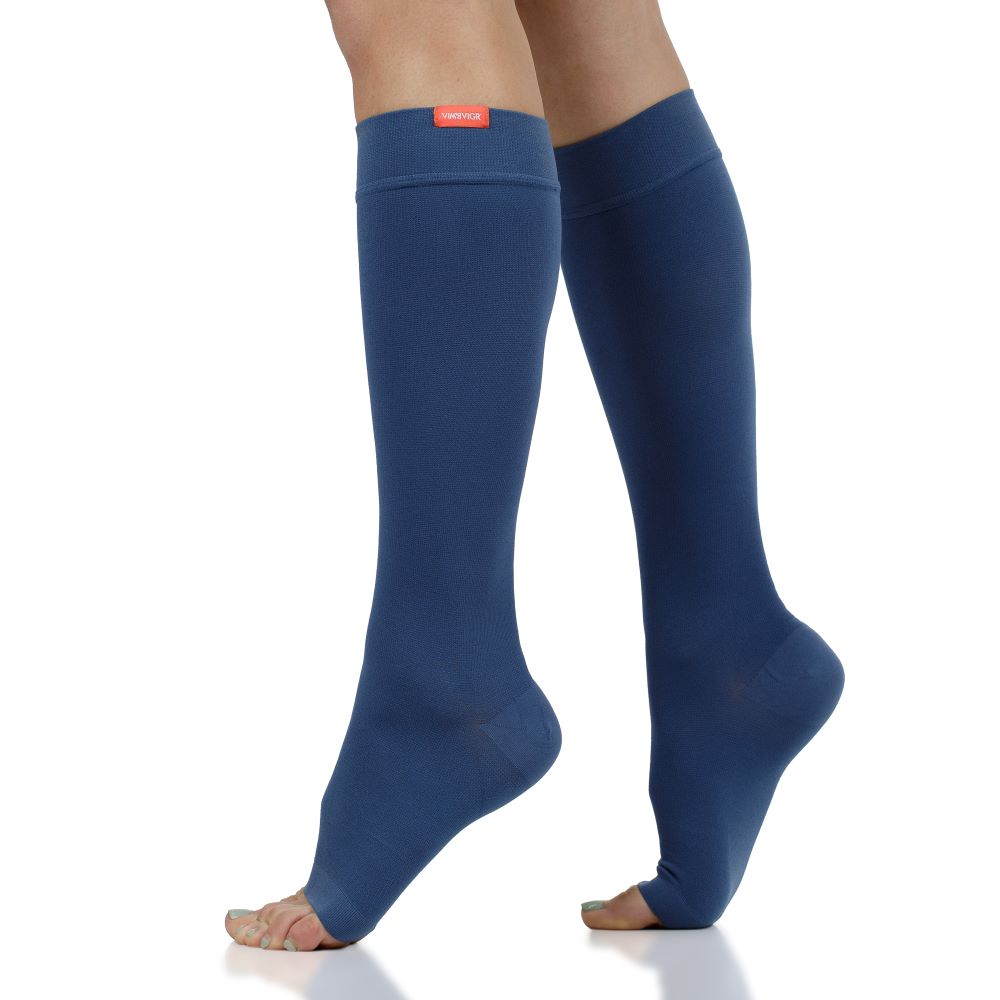Do Compression Socks Help with Leg Cramps?
Do you ever find yourself feeling leg pain and discomfort after a long day? Then, you may have thought about trying compression socks. After all, they are known to help with recovery after exercise, re-energizing tired legs and preventing the lower limbs from swelling. But do compression socks help with leg cramps?
In this blog post, we’ll explore the evidence for and against wearing compression socks to prevent leg cramps. We'll discuss how compression socks work, what scientific research has revealed about their effectiveness, and whether they might be worth trying for your own leg cramp issues.
Read on to find out:
- The main causes of leg cramps;
- How compression socks help;
- The role of compression socks against muscle twitching, night cramps, and more;
- How to wear anti-cramping compression socks that make a difference.
Do Compression Socks Help Leg Cramps?
First off, let’s start with the way compression socks work and their benefits. Thanks to their design, compression socks apply a gradual level of pressure onto the legs, starting at the ankle and slowly decreasing as you move up the leg towards the knee. This means that blood flow is gently stimulated upwards, preventing blood from pooling by the ankles.
This is one of the biggest benefits of wearing compression socks. With a gentle squeeze, they improve circulation. This can go a long way towards preventing swelling, blood clots, or even more serious conditions like Deep Vein Thrombosis. Moreover, the increase in blood flow helps you feel more energized. It also makes the legs feel lighter and fresher.
When it comes to cramping, there is no definitive answer as to whether compression socks have a direct impact. This is because (as we’ll see below) there is no clear consensus on the causes of leg cramps. However, wearing compression socks gives you an in-built leg massage, releasing tension and swelling (which can be painful, so associated with cramps). They can offer a welcome relief when you suffer from cramps and they alleviate a lot of symptoms connected to the cause of leg cramps (as we’ll see below).

Top Risk Factors and Causes of Leg Cramps
If you suffer with leg cramps, you’ll probably already know at least one reason for this. At least, you might suspect the culprit. However, although cramps are a common issue and about 60% of adults get them, there is no definitive known reason for them. The following are some top risk factors, as shown by anecdotal evidence.
Mineral depletion and dehydration
This is a pretty hotly debated topic, especially for runners and distance walkers. Traditionally, physical exertion and dehydration associated with running in hot weather have been linked to cramping. However, research is inconclusive as to whether you can treat cramps by hydrating better.
For some people, ensuring that they supplement with electrolytes before, during and after physical effort helps reduce the likelihood of getting a leg cramp. There are studies that point to the body not having enough minerals (sodium, magnesium, potassium and calcium) when cramps occur in the legs and feet. Hydrating with specific sports drinks and supplements should therefore prevent these. But this hasn’t always worked for all runners and athletes, so there could be other reasons for cramping.
Muscle fatigue
The fact that muscles become tired after long efforts can be linked to cramping. Putting too much strain on your legs, by running or walking, can lead to this. You are also at risk of cramping after spending all day on your feet – e.g., if attending a conference or if you have a job that has you standing a lot.
To an extent, muscle fatigue goes hand in hand with dehydration. It could also be linked with poor blood circulation, in which case compression socks can help.
Finally, one reason for earlier onset of muscle fatigue and cramping can be a lack of proper stretching. Some scientists have linked muscle cramps with inadequate warm-ups and stretches. For activities like running and hiking, a gentle warm-up featuring dynamic stretching can help prevent cramping.
Inadequate blood flow and circulation
If blood isn’t flowing freely throughout your lower legs, you can develop pain and cramping. For example, leg cramps can often occur when you fly – especially for over 3-4 hours. This is a period of time where you move very little, and blood tends to pool around your ankles as you sit on your seat.
When you stay still for this long and blood doesn’t flow, your legs can swell up and cramps can start to take over. You can avoid this by wearing compression socks, which will help support blood circulation, and by watching your diet. Dehydration and too much sodium from salty snacks and airplane food all contribute to your lower limbs swelling and starting to cramp.

Age
As we get older, so do our veins, muscles and nerves. This can lead to less control over muscle movement and, over time, to leg cramps caused by involuntary contractions of the muscles.
Another side effect of ageing is the increased likelihood of suffering from medical conditions for which you need to take medication that increases the risk of muscle cramps. Finally, older people are more vulnerable to venous disease or damaged vein walls. This increases their risk of developing DVT and of having leg cramps.
Pregnancy
Leg cramps are one of the symptoms pregnant women report during the second and third trimesters. The CDC also warns that pregnancy increases the risk of developing a blood clot five times.
The good news is that compression socks can really help against the formation of blood clots, by keeping blood circulation flowing well throughout pregnancy. And, to prevent cramps, it’s recommended that you stretch gently and continue to stay physically active. Stretching the legs before going to bed can reduce the risk of night time leg cramps and improve your rest.
Certain medical conditions
Research shows that certain diseases and medical condition increase the risk of leg cramps. These include artery diseases, nerve damage, or diabetes, thyroid disorders and liver problems.
Cramps also occur as a result of taking specific medication. Drugs that treat hypertension, heart disease, high cholesterol, Parkinson’s and Alzheimer’s disease are all likely to provoke cramps.
How Do Compression Socks Help with Leg Cramps?
In cases where your leg cramps are caused by poor blood circulation or lack of physical activity over a longer period of time, compression socks can make a huge difference against them. Thanks to their gentle pressure against the leg muscles, this type of garment support healthy blood flow and reduce the risk of developing blood clots or of swelling.
Moreover, compression socks are recommended during pregnancy to help keep legs fresher and lighter. And, for older patients who struggle with leg cramps because of venous insufficiencies or as side effects of other medication, compression socks are a simple and gentle way to feel better and enjoy increased mobility.
Can Compression Socks Prevent Leg Cramps?
Since there is no consensus on the definitive causes of leg cramps, we cannot say for sure what prevents them. However, because compression socks promote good blood circulation, they will be efficient in preventing swelling and feelings of pain in the lower limbs.
Compression socks also help your muscles recover after physical effort, so the pain from Delayed Onset Muscle Soreness (DOMS) is reduced. As a result, involuntary spasms causing cramping can also be reduced.
Will Compression Socks Help with Muscle Twitching?
Muscle twitches are involuntary spasms that can occur as a result of significant effort or of dehydration. The definition of muscle spasms features twitches as the lower end of the scale when we evaluate the pain and discomfort.
Since we do not know for certain what causes leg cramps, spasms or twitches, we can only rely on anecdotal evidence. However, it is clear that wearing compression socks helps reduce swelling, promote good blood circulation, and relieve tired and aching limbs.
Will Compression Socks Help with Leg Cramps at Night?
Overnight leg cramping is known as a “nocturnal leg cramp.” It often occurs when someone has made a lot of effort during the day. They may be dehydrated or lacking minerals like potassium. They could also be suffering from the heat.
By providing support to your lower limbs and increasing blood circulation throughout the night, compression socks can relieve pain and discomfort. They can therefore reduce the likelihood of night cramps occurring.

How to Wear Compression Socks for Leg Cramps
Wearing compression socks for leg cramps can be an effective way to reduce and prevent their painful symptoms. To get the most out of your socks, it's important to select the right product for your needs and wear them properly.
We advise that you opt for graduated compression, with more pressure applied around the ankle, decreasing as you move up the calf muscle. This will stimulate blood circulation.
You should also ensure that you start off with a lower level of pressure, allowing your legs to get used to the feeling of compression. Slowly increase the length of time you wear your compression socks for, until you’ll be able to keep them on all day long.
Finally, research the type of material you want from your socks. While Merino wool can keep you warm in the cold and also keep feet dry in humid conditions, you might also enjoy wearing Nylon socks for their light and tight feeling. Other options include cotton, too. You should experiment with different fabrics and consider the weather conditions and the activities you’ll wear your socks during.
Best Compression Socks for Leg Cramps
With proper care and use, compression socks can provide relief from uncomfortable leg cramps and help you keep moving throughout your day. While we don’t know for certain what causes leg cramps, we can pinpoint some risk factors that you should be aware of. As for the symptoms, compression socks can help relieve soreness and swelling, and they can support your muscles for faster recovery from efforts. Check out our range of compression socks in all types of colors, styles, and compression levels, so you can pick your favorite now!


















thank you for your information…
I was given a pair of compression socks to wear after some recent surgery and although I stopped wearing them after the recuperation period finished, I have decided to wear them at least during sleeping time as I suffer from nocturnal night clamps…after reading your info, I will probably wear them during work as well seeing as that I am standing stationary for quite a bit of the day…
As I have inherited ‘my father’s legs’, who had circulation problems, I found the information very helpful…
Leave a comment